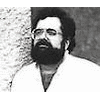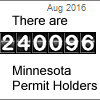|
|
|
It is currently Fri Apr 26, 2024 2:09 pm
|
View unanswered posts | View active topics
This is a static archive the Twin Cities Carry forum, maintained as a public service by the current forum of record, The Minnesota Carry Forum.
All times are UTC - 6 hours
EMS and guns, a general guideline
| Author |
Message |
|
plblark
|
Post subject: EMS and guns, a general guideline  Posted: Posted: Wed Jan 03, 2007 12:03 pm |
|
| Longtime Regular |
 |
Joined: Thu Mar 16, 2006 10:41 am
Posts: 4468
|
|
 |
|
 |
|
hammAR
|
Post subject:  Posted: Posted: Wed Jan 03, 2007 12:50 pm |
|
Joined: Fri Dec 16, 2005 7:54 pm
Posts: 1941
Location: N 44°56.621` W 093°11.256 (St Paul)
|
All I got was a "You are not logged in. " message...... 
|
|
 |
|
 |
|
plblark
|
Post subject:  Posted: Posted: Wed Jan 03, 2007 1:00 pm |
|
| Longtime Regular |
 |
Joined: Thu Mar 16, 2006 10:41 am
Posts: 4468
|
hammAR wrote: All I got was a "You are not logged in. " message......  I forget if login is required just to read ... Since I'm almost always logged in it hasn't been an issue for me. I'd recommend an account over there anyway. National in scope, good atmosphere, and several custom holster makers participate there regularly. here it is quoted for those who don't want another account somewhere: Quote: Pistol Packin’ Patients
You are dispatched to an unconscious male at the park. Upon arrival you find an adult male unconscious, with classical signs of anaphylaxis. After initiating treatment, you place the patient in your ambulance, and begin transport. As the patient begins to respond to treatment, your student performs a physical exam. “Hey, this dude’s got a gun!”
Virginians have been able to carry concealed handguns as a shall-issue state since 1996, and for much longer as a may-issue state prior to that. Virginia has concealed handgun agreements with at least 21 other states. Open carry of handguns is legal throughout Virginia, and 47 states have some form of process for legal concealed carry. Nebraska recently enacted legislation that requires permit holders to disclose and surrender their handguns to emergency service workers. Virginia, however, has no such allowance.
It is possible that EMS providers will come into contact with a patient who is carrying a handgun. Awareness of a handgun may be by the patient’s admission, or be discovered during the physical exam. The mere presence of a legally carried handgun should not indicate a thread to EMS safety. Illegally carried handguns may present a different set of concerns. Providers have a duty to themselves and their coworkers, to make any such handguns safe until they can be secured, or turned over to a law enforcement officer. An officer may not always be immediately available. EMS agencies should have in place a protocol for how to deal with legally carried firearms that are not subject to law enforcement action.
While many EMS providers may be reluctant to take custody of a handgun, there may be no other option. The patient may have an altered level of consciousness, be physically impaired by injury, the handgun may impede application of a backboard, or narcotic treatment may be indicated. There is no cause for alarm. Handguns do not go off by themselves. A handgun will only discharge if the trigger is depressed, or if there is a mechanical malfunction, which is quite rare.
The three rules of EMS gun safety. 1. All guns are always loaded. 2. Never point the gun at something you are not willing to destroy. 3. Keep your finger and other objects off the trigger at all times. Nobody will be injured by a gun unless multiple rules are disregarded. The primary safety device for all guns lies between the ears.
You may find a holstered handgun at any point along the belt, in an elastic band or pouch under the pants, under the armpit, on the ankle or thigh, hanging from a necklace, or in a pants or coat pocket. Several manufacturers offer specialty concealment apparel with hidden pockets. Other off-body carry options include purses, fanny packs, day planners, and backpacks. Virtually all holsters are designed to prevent inadvertent trigger presses by covering the trigger. Some holsters have retention devices that prevent the handgun from easily being dislodged or removed. These include buttons, straps, and friction fit. Some holsters are secured to the body by a belt loop, while others slip over the belt by means of tabs, springs, or clips. The vast majority of handguns can be rendered safe by simply leaving them in the holster.
The revolver is rarely seen with a manual safety device. Safety is assumed due to a heavy trigger pull. While some may be modified for a light pull, this only applies if the revolver is cocked. Cocking a revolver rotates a cartridge under the hammer. Pulling the trigger causes the cartridge to fire. Most modern revolvers will cock first in sequence while pulling the trigger, eliminating the need for two separate actions. To unload a revolver, press the cylinder latch (behind the cylinder on the left side) forward, back, or in, depending on the model, push the cylinder open, and allow the cartridges to drop free.
The semi-automatic pistol is loaded by inserting a magazine, then manually cycling the slide. Pulling the trigger causes another cartridge to enter the chamber, making it ready to fire again by another pull of the trigger. The pistol may or may not have a manual safety, which, if available, is usually located on the upper left side at the rear. Generally, up means safe, down means fire. Some may have a de-cock feature, which requires a downward press. Many pistols have no external hammer. Some are designed to be carried “cocked and locked,” that is, cocked with the safety engaged. The variations of pistols available on the market, and subsequently the steps required to unload them, cannot be adequately addressed without hands on instruction. The pistol owner’s instructions, or a working knowledge of pistols, are strongly suggested prior to removing the cartridges. The rest of this paragraph is meant only as an adjunct to hands-on instruction. The magazine release is usually located at the rear of the trigger guard, on the left side. Removing the magazine DOES NOT remove the cartridge already loaded into the chamber. The slide must be cycled to remove this cartridge, and will usually lock in the open position, as long as the magazine is out. The safety may have to be disengaged to cycle the slide. Failure to remove the magazine prior to cycling the slide will only cycle another round into the chamber!
EMS providers are encouraged to seek professional instruction prior to attempting to manipulate any handgun. There are a number of gun shops and trainers in the area, which may be willing to offer a brief tutorial.
So back to the matter at hand, what to do with the handgun? A soft or hard sided pistol case is optimal, and can be found at prices starting between $6.00 and $21.00. They can then be padlocked (keep the key on the ignition ring). Handguns are expensive high-theft items. If possible, secure the case in a locking cabinet. Upon arrival at the hospital, have security take control of the handgun, and get a receipt. Make sure the patient is made aware of the disposition of his property. Some patients may be reluctant to surrender their handgun. This may be for safety reasons, as they do not want anyone handling their handgun, or the chance that it may get in the wrong hands. These concerns are understandable. Can the handgun be turned over to a relative, left in the home, locked in the trunk of a car, unloaded prior to transport? If not, a police officer may have to be requested.
EMS safety is paramount. Last year, a provider in North Carolina was helping an intoxicated patient off the stretcher when he pulled a handgun and fired into her chest. She survived. The patient was wrestled to the ground by firefighters. Elsewhere, an EMS crew was killed by an angry spouse upon returning to their station. Separate incidents have been reported of EMS crews being targeted by deranged homeowners. Reports out of the United Kingdom show that violence against EMS is rampant. There are techniques that can be employed, to prevent injury during an assault. We in EMS should not assume we are immune from violence. Often the first sign of violence comes after our arrival. We should expand scene safety to include self defense.
__________________
Alan W. Rose
Guns Save Lives. Paramedics Save Lives. But...
Paramedics With Guns Scare People!
|
|
 |
|
 |
|
joelr
|
Post subject:  Posted: Posted: Wed Jan 03, 2007 1:26 pm |
|
| The Man |
 |
Joined: Sun Aug 07, 2005 5:43 am
Posts: 7970
Location: Minneapolis MN
|
|
It's not too badly written, but he assumes both too much and too little knowledge in the part of his audience . . . who doesn't need it anyway. (An EMT encountering a gun on an unconscious patient doesn't need to know what kinds of permits somebody can have that would make carrying the gun lawful; they just need to know that there are people who aren't cops who can carry guns lawfully, as well as people who carry guns criminally.)
I wish he'd gone into a little more detail on what to do, generally, rather than the specific sorts of mechanisms, for a gun-ignorant EMT who has to take control of it. (Say, because they've got a patient who is incoherent, and there's nobody better able to take possession of it.)
My first-blush take would be something like, "Pointing the gun in a safe direction -- so that if a bullet comes out of at big hole at the end of it, it won't hurt somebody -- set it down on the zippered "gun rug" that should be part of your equipment, close and zip it up, then carefully enclose the "gun rug" in a plastic box."
It's certainly possible to teach people about the different kinds of actions and how to make each kind of gun unable to make a bang, but there's a lot of room for error by somebody who doesn't know much of anything about guns -- and becoming an EMT doesn't, as far as I know, include even a basic course in firearms safety.
Still, some basic firearms safety and specific training on handling guns in this sort of situation would seem to me to be a terrific idea for EMT folks, given that there are 47 states in which some civilians do regularly carry handguns legally, and 50 states in which some criminals do regularly carry handguns illegally -- the chances of an EMT having this sort of problem at some point during his or her career are pretty high.
_________________
Just a guy.
|
|
 |
|
 |
|
Fixxer
|
Post subject:  Posted: Posted: Wed Jan 03, 2007 2:44 pm |
|
Joined: Sun Nov 13, 2005 8:29 pm
Posts: 88
Location: Maple Grove
|
|
When I hit the deer with my motorcycle, the EMT... ... ...wasn't prepared. She was feeling in my jacket to see if I had broken ribs, and I said, "Yes and yes.". She looked at me kinda funny, and so I said, "Yes, there is a gun in there, and yes, I am glad to see you.".
She seemed OK with it, but she told every single person who stopped that I was packing, including the Trooper.
The Trooper said, "Do you have a gun?", and I said yes. "Is it loaded?" and I nodded and said "2 spare mags". He then said, "I'll need to take that from you.". Still laying on the ground, I said, "I've been here for almost a half hour, and it hasn't been a problem yet. Is that really necessary?", and he said that he would get back to me. He never mentioned it again.
For the record, I declined the ambulance. I should have gone with them, but I got scared over how much that might cost.
|
|
 |
|
 |
|
joelr
|
Post subject:  Posted: Posted: Wed Jan 03, 2007 3:03 pm |
|
| The Man |
 |
Joined: Sun Aug 07, 2005 5:43 am
Posts: 7970
Location: Minneapolis MN
|
Fixxer wrote:
The Trooper said, "Do you have a gun?", and I said yes. "Is it loaded?" and I nodded and said "2 spare mags". He then said, "I'll need to take that from you.". Still laying on the ground, I said, "I've been here for almost a half hour, and it hasn't been a problem yet. Is that really necessary?", and he said that he would get back to me. He never mentioned it again.
Good judgment on his part -- there's no particular reason a cop should want to handle a gun he's not familiar with, given a reasonable alternative. (Some cops know handguns very well; some know less about them than they do about, say, the computers that they use.)
_________________
Just a guy.
|
|
 |
|
 |
|
Andrew Rothman
|
Post subject:  Posted: Posted: Wed Jan 03, 2007 4:33 pm |
|
| Longtime Regular |
 |
Joined: Sun Aug 07, 2005 10:24 am
Posts: 6767
Location: Twin Cities
|
|
The article ought to say, "If at all possible, LEAVE THE GUN IN ITS HOLSTER, and remove gun and holster from the patient as a single unit."
Toss it in a Ziploc and it's fine. Sheesh.
This is the safe, obvious choice in most situations. If I'm incapacitated, I won't quibble with the EMTs for having to unbuckle or cut a belt or strap.
If it must be removed from the holster/pocket/etc., Joel's advice is sound.
Of course, the ideal answer is more education. I'll be happy to teach EMTs an abbreviated, handgun-only Home Firearm Safety course for nothing, if asked.
_________________
* NRA, UT, MADFI certified Minnesota Permit to Carry instructor, and one of 66,513 law-abiding permit holders. Read my blog.
|
|
 |
|
 |
|
Mike
|
Post subject:  Posted: Posted: Wed Jan 03, 2007 6:17 pm |
|
| Senior Member |
 |
Joined: Thu Oct 12, 2006 7:18 pm
Posts: 402
Location: Saint Paul
|
|
Andrew you might wish to contact the folks who conduct the ems training. Having said that, the syllabus for these things is truly jammed. They really have to triage the material. I know that when I went through there was no mention of it nor for any recertifications since. It's generally labeled a 'police issue'.
_________________
Mike
|
|
 |
|
 |
|
Red XIII
|
Post subject:  Posted: Posted: Wed Jan 03, 2007 8:38 pm |
|
Joined: Fri Oct 27, 2006 10:09 am
Posts: 352
Location: Minnesota
|
|
Andrew, good luck with trying to teach...EVeryone in the higher ups at most hospitals are very anti-gun, think it's a perfect world where the police are there to help us all the time, and would never approve of such training. They won't approve defensive training and many other training courses that'd be invaluable. Also, EMT's and medics are on the healthcare bottom-of-the-Totem-pole. A lot of doctors don't understand what we do or even why we exist (other than to transport).
Joel, you're right, they teach basic extrication, water rescue, and other rescue stuff (for medics, EMT's often have little to no knowledge of these skills unless they are also firefighters). Anything to do with guns isn't usually dealt with...It wasn't when I became an EMT, never in any continuing education, and none in any refreshers.
There are also many EMT's/Medics that would never learn that because they hate/fear guns so much too.
Sorry for the text wall.
Red
|
|
 |
|
 |
|
HOPPES9
|
Post subject:  Posted: Posted: Wed Jan 03, 2007 9:38 pm |
|
Joined: Thu Aug 10, 2006 5:53 pm
Posts: 235
|
|
It is inexcusable for any EMT/ First Responder/ Fireman to not seek firearms training.
Regardless of the depts policy.
Guns are pretty simple compared to the medical equip they work with daily.
I think they also need to pass a class just to drive the ambulance.
|
|
 |
|
 |
|
Srigs
|
Post subject:  Posted: Posted: Wed Jan 03, 2007 10:03 pm |
|
| Longtime Regular |
 |
Joined: Fri Aug 26, 2005 5:40 am
Posts: 3752
Location: East Suburbs
|
|
Very interesting discussion and something I believe is very important. This should be mandatory training for EMS/T workers.
I have also trained my wife on how to handle all my guns. We have talked about this on how to handle. Including removing the holster with the gun and locking it in the trunk if it is safe to do so.
_________________
Srigs
Side Guard Holsters
"If everyone is thinking alike, then somebody isn't thinking" - George S. Patton
|
|
 |
|
 |
|
Widge
|
Post subject:  Posted: Posted: Wed Jan 03, 2007 10:18 pm |
|
| Delicate Flower |
 |
Joined: Thu Feb 02, 2006 1:50 pm
Posts: 340
|
HOPPES9 wrote:
I think they also need to pass a class just to drive the ambulance.
They do
|
|
 |
|
 |
|
Red XIII
|
Post subject:  Posted: Posted: Thu Jan 04, 2007 1:37 am |
|
Joined: Fri Oct 27, 2006 10:09 am
Posts: 352
Location: Minnesota
|
Widge wrote: HOPPES9 wrote:
I think they also need to pass a class just to drive the ambulance.
They do Defensive driving is about the only thing "defensive" I can do on company time/dime...I agree all EMT's/ Medics should have firearm training...The SWAT EMS do (even though we cannot carry, we're trained to hole-up/defend w/LEO weaponry). Like I say, the problem is that "perfect world" mentality...Many people in EMS would probably get disciplined/fired for clearing a firearm on a call sadly. I'd still do it though (better to be judged by 12 than carried by 6). And the driving course is state mandate (DOT, used to require a B liscence to drive ambulances).
I hate it, but it's the way it is, hence reason I'm looking for a new profession.
Red
|
|
 |
|
 |
|
Rem700
|
Post subject:  Posted: Posted: Thu Jan 04, 2007 7:58 am |
|
Joined: Thu Aug 18, 2005 7:46 am
Posts: 257
Location: Blaine, Mn
|
Unless it must be removed leave it where it is in the holster and unhandled, If it must be removed then try to leave it in the holster and remove as a unit and then bag it. He gave way too much vague info on how to unload a gun and much misinformation  which could lead to a AD if I am already injured I dont need a gunshot added to my list of medical problems.  . As with most anything else gun related proper training is in order and that doesnt include something you read on the internet. 
|
|
 |
|
 |
|
Aquaholic
|
Post subject:  Posted: Posted: Thu Jan 04, 2007 9:09 am |
|
| Longtime Regular |
 |
Joined: Fri Aug 12, 2005 10:49 am
Posts: 687
Location: South Minneapolis (Nokomis East)
|
You EMT types (and even those of you who aren't) might enjoy this blog:
http://ambulancedriverfiles.blogspot.com/
He's a former ambulance driver/emt and is now an ER guy. Funny as hell. He was recommended by LawDog (for those of you who read him, link below), and writes in a similar style.
Sorry for the drift, please go back to what you were doing. 
_________________
I smoke. Thanks for holding your breath.
"Build a man a fire, he'll be warm for a night. Set a man on fire, he'll be warm for the rest of his life." ~ unknown
Never been tazered. (yet).
Last edited by Aquaholic on Thu Jan 04, 2007 9:22 am, edited 1 time in total.
|
|
 |
|
 |
This is a static archive the Twin Cities Carry forum, maintained as a public service by the current forum of record, The Minnesota Carry Forum.
All times are UTC - 6 hours
Users browsing this forum: No registered users and 185 guests |
|
You cannot post new topics in this forum
You cannot reply to topics in this forum
You cannot edit your posts in this forum
You cannot delete your posts in this forum
|

|

|